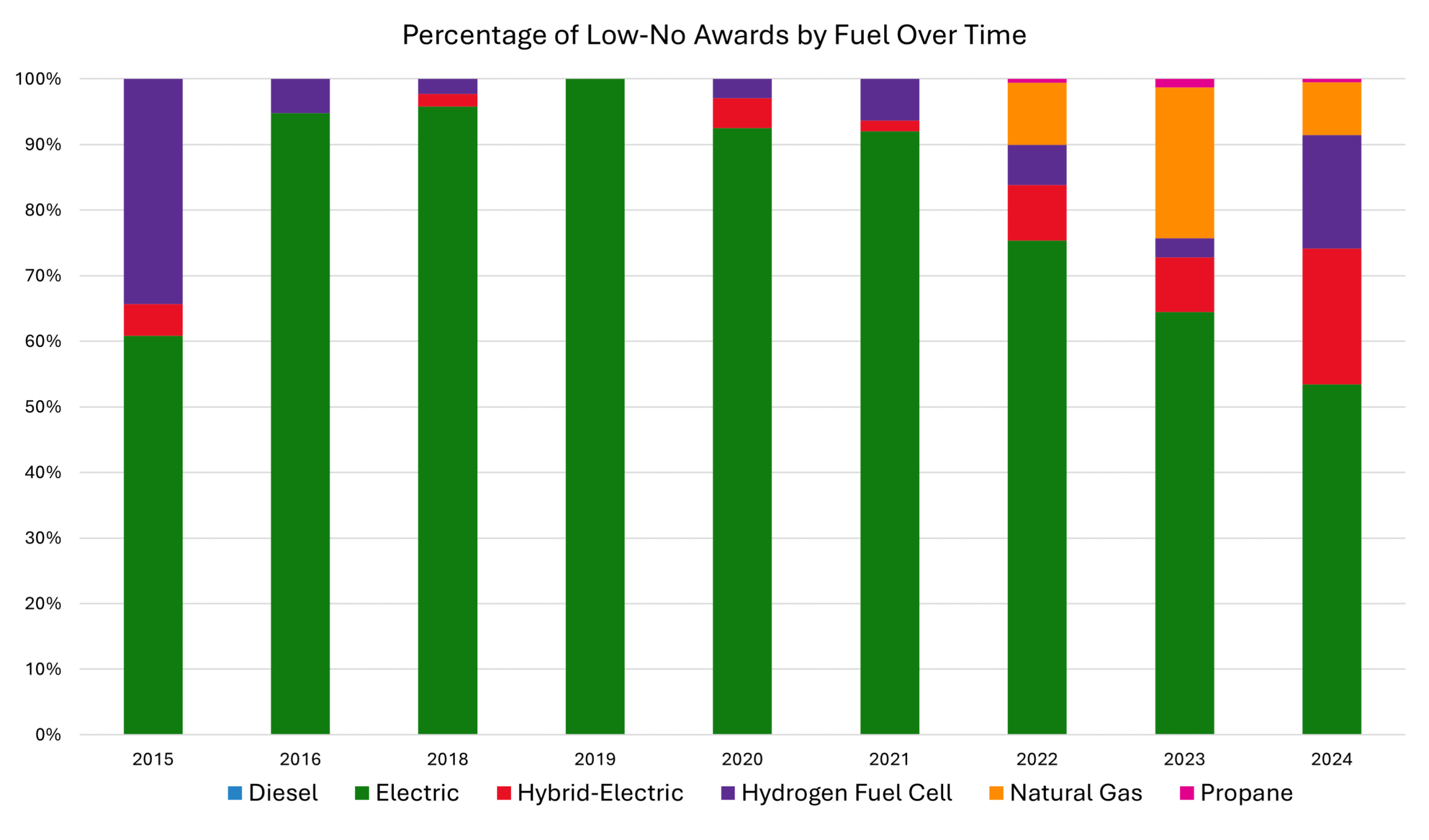Image Source: State Policy Dashboard
On July 9, 2024, the U.S. Department of Transportation (USDOT) announced another $1.5 billion for 117 transit bus projects across 47 states as part of the third round of funding for the Grants for Buses and Bus Facilities and Low-and No-Emission Programs. For an overview of the second round of funding, check out last year’s digest. This latest announcement brings the Federal Transit Agency’s total investment in bus modernization to $5 billion, which can support up to 5,600 American-made buses and much more.
To set some context, in 2021, there were approximately 71,000 transit buses in the US. About half were powered by diesel, a quarter by natural gas, and about 18 percent (or more than 13,000 buses) were hybrid buses. Hybrid buses were also the fastest-growing type of bus between 2008 and 2021.
Meanwhile, zero emission buses (ZEBs) are on the rise too. CALSTART found that in 2023, transit systems had funded, ordered, delivered, or deployed 6,147 zero-emission full-sized public transit buses, representing a 12 percent growth from 2022. Of these ZEBs, the majority were battery-electric. The same report found that California transit agencies had the most ZEBs in 2023, while New York added the most to their fleets between 2022 and 2023.
Returning to the funding announcement, this $1.5 billion encompasses two programs: Grants for Buses and Bus Facilities (BBF) and the Low-and No-Emission (Low-No) Program. BBF allocates a total of $2 billion through 2026 and awarded $400 million in this round. Its purpose is to help transit agencies buy and rehabilitate buses and vans and build and modernize bus facilities. Low-No is a $5.6 billion investment through 2026, which awarded $1.1 billion for multiple low or zero emission fuel types in this latest round. Compared to BBF, the Low-No program supports agencies in buying or leasing U.S.-built low- or no-emission vehicles, making infrastructure upgrades for low- or no-emission vehicles, and buying battery electric vehicle charging equipment.
Here are some high-level takeaways from the recent announcement:
-
Notably, 80 percent of the buses funded in this round will be low or zero emissions, with low emission defined as making “greater reductions in energy consumption and harmful emissions, including direct carbon emissions, than comparable…buses.” This includes compressed natural gas, propane, and hybrid vehicles but not biodiesel or clean diesel buses.

